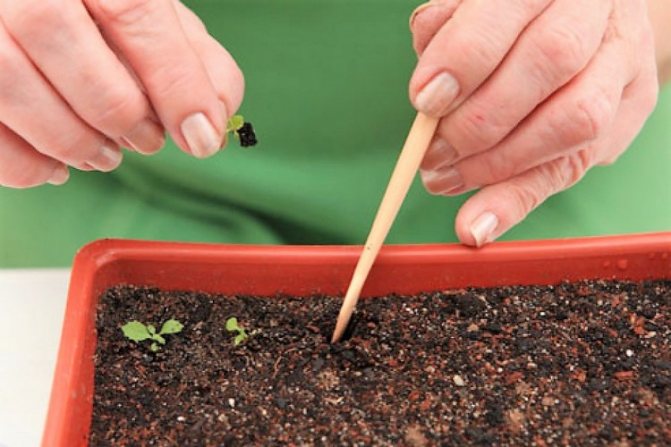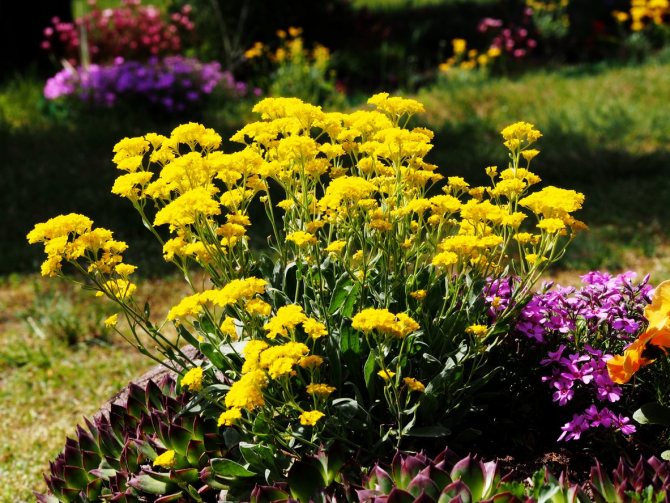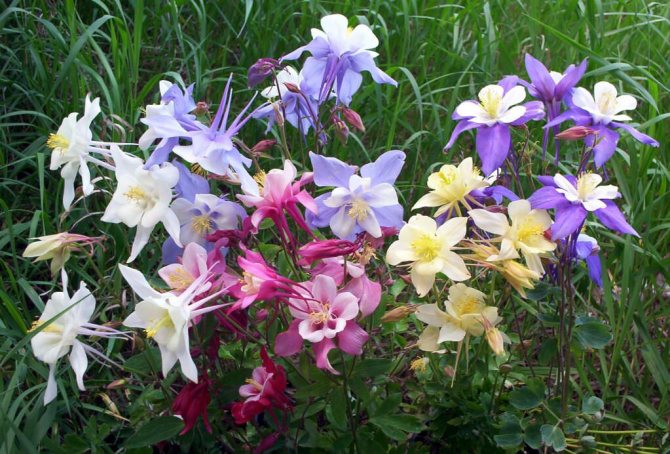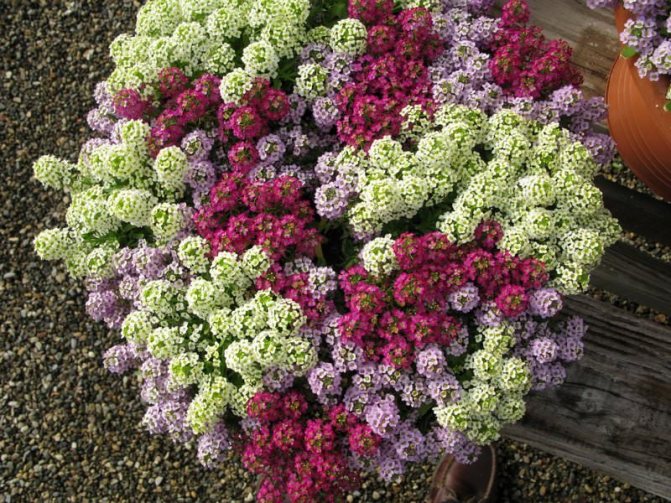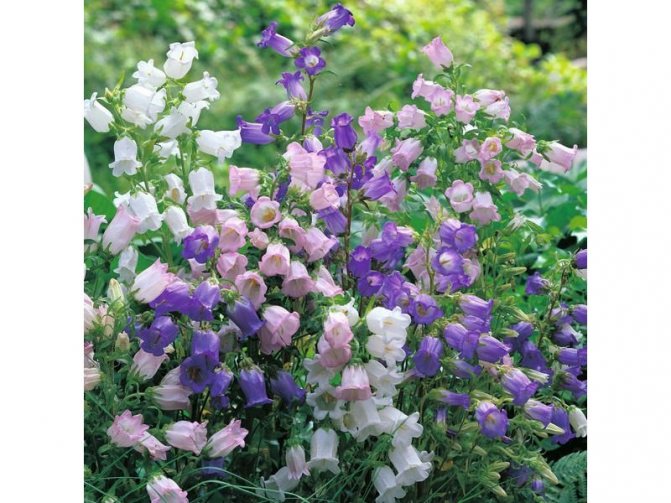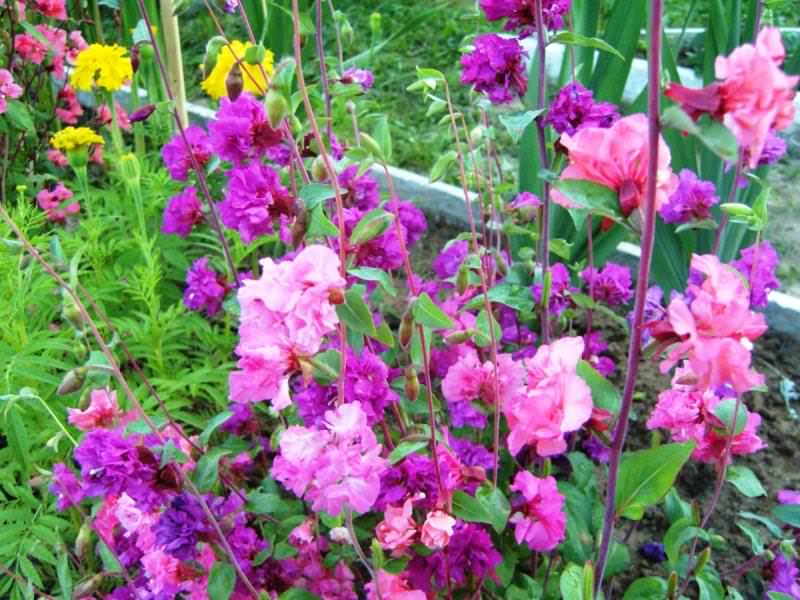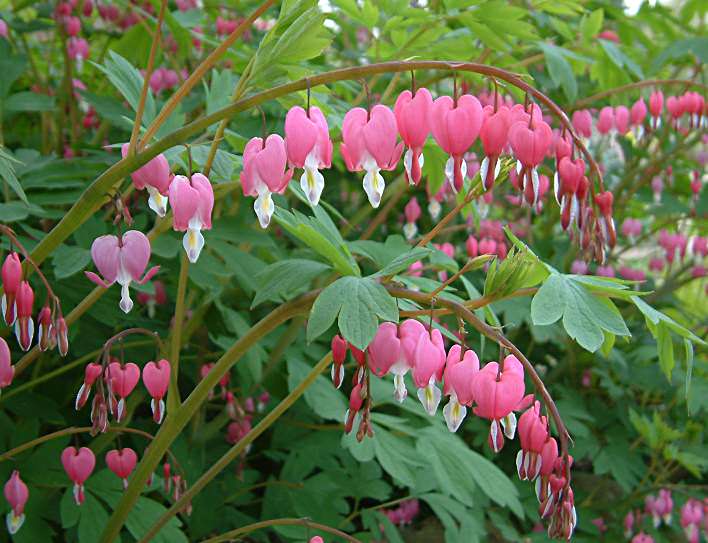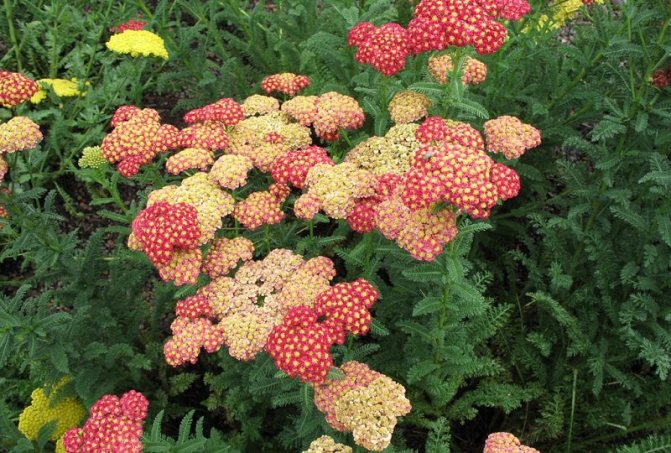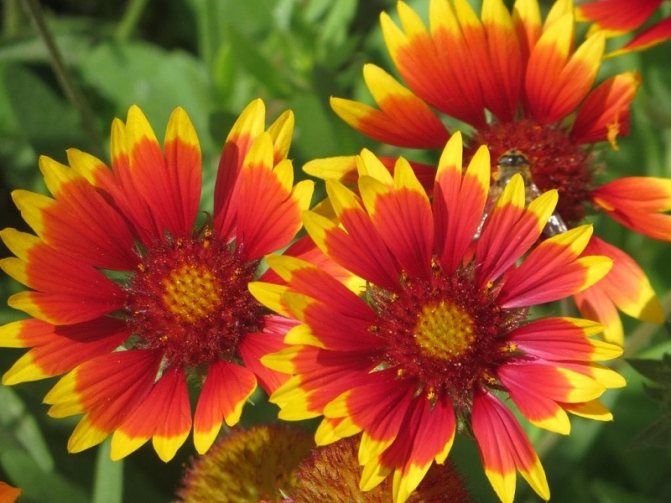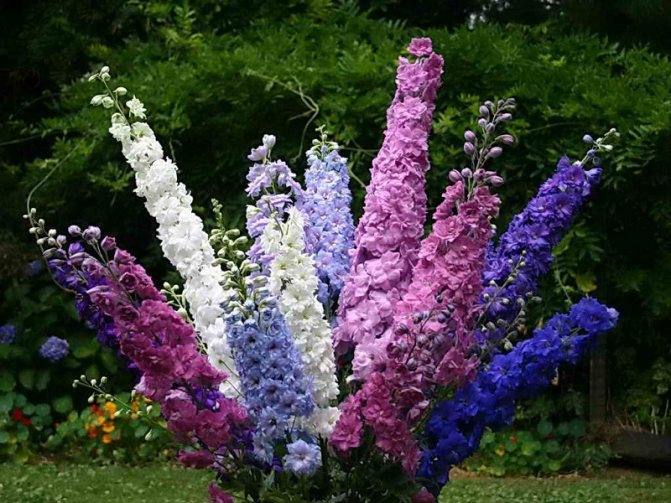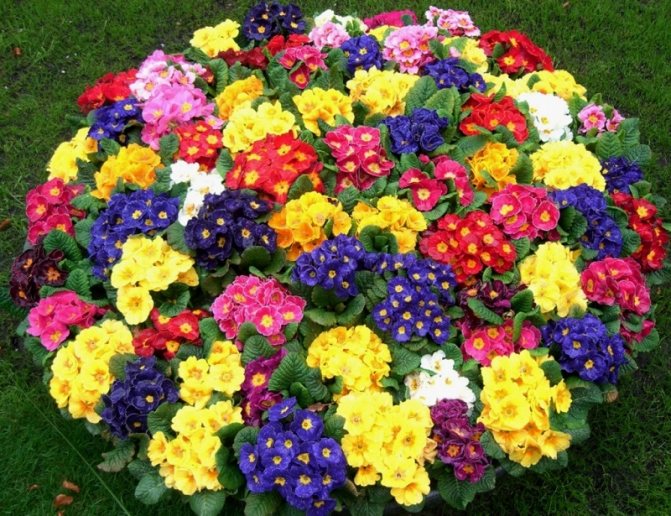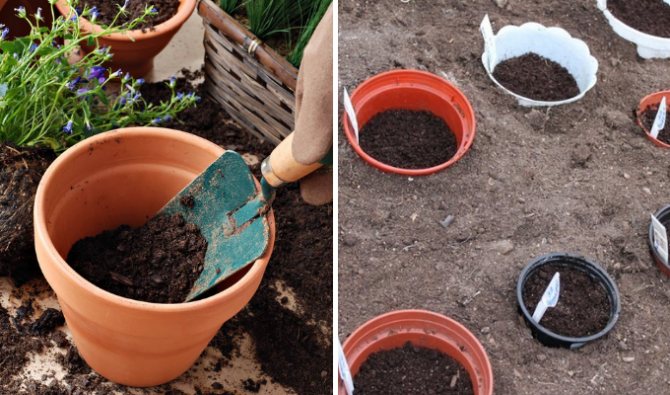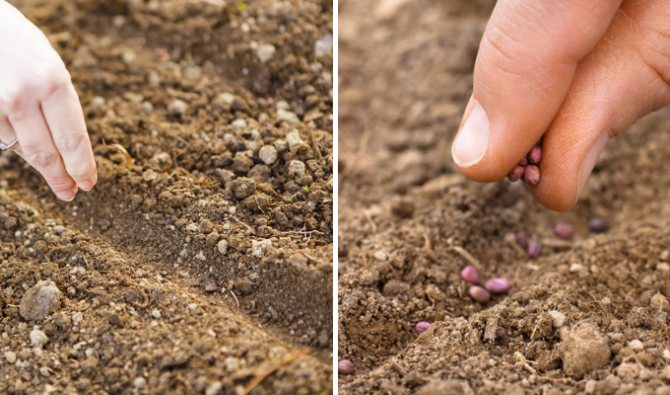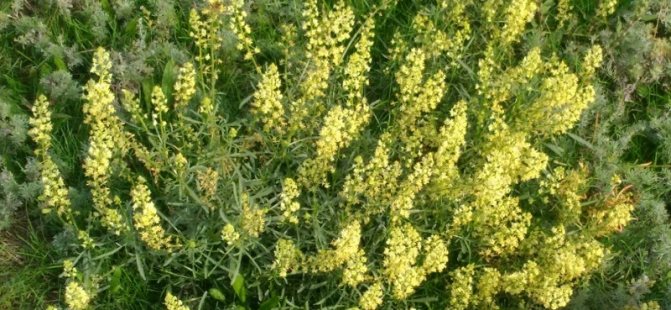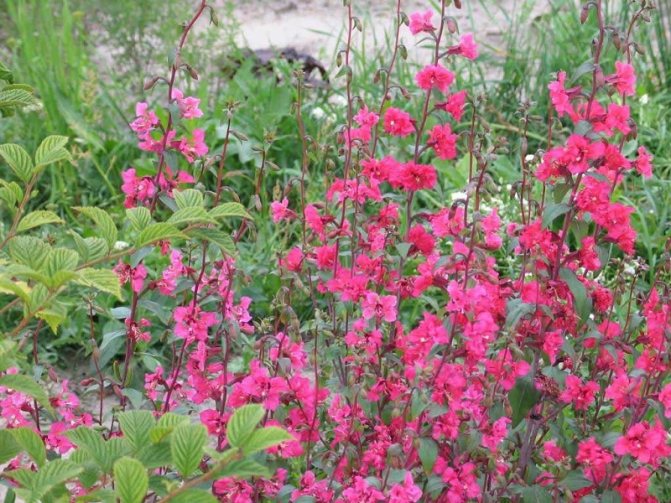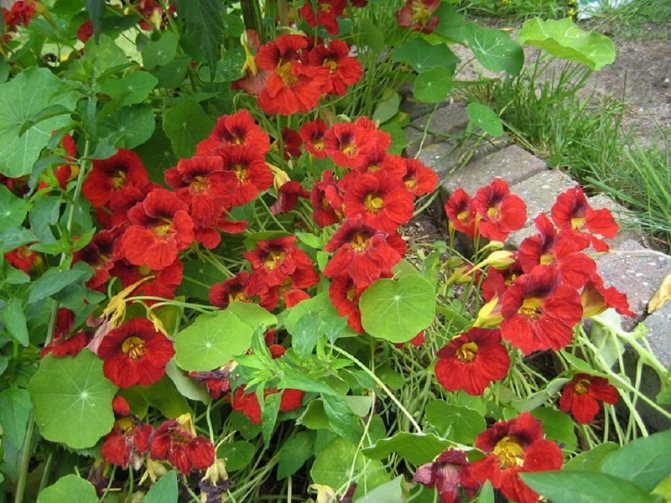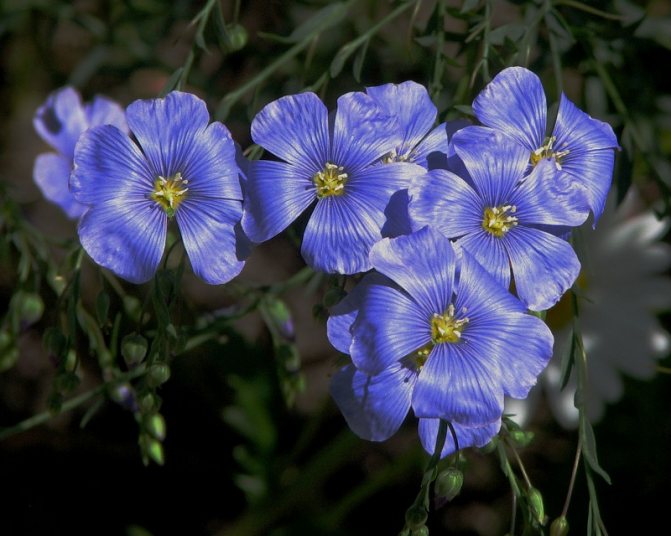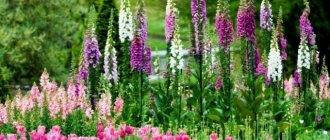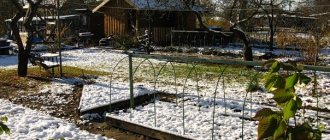Have you closed your country house for the winter, having finished the season, and said goodbye to the plants until the spring heat? You can once again go to your favorite summer cottage to sow flowers in the winter. This procedure will not take much of your time, and in the spring you will be grateful to yourself for your foresight, you will receive free seedlings of perennial and annual flowers, which will most likely be able to bloom even earlier.
216
When to sow flowers before winter
Only cold-resistant annuals are suitable for autumn sowing. The main condition for such a planting is the freezing of the upper layer of the earth. If sowing work is carried out in warm soil, seedlings may soon appear, which will then die from frost. In this case, the sowing should be abundant due to the fact that some of the seeds will surely die. The soil should be prepared in advance, in September. It is dug up, fertilized and furrows are cut.
On a note! For small seeds, the groove should be 1 cm deep, for larger seeds - 3-5 cm.
You should start sowing directly in late November or early December, when the ground is completely frozen. Seeds are sown in grooves and covered with a mixture of peat or humus and sand.
You can plant annuals at the beginning of winter. In this case, the seeds are laid directly into the snow, with a snow cover thickness of 20-25 cm. This can be done from mid-December to early January. The snow mass is tamped with your feet, the seeds are laid out on top in rows, or in the form of a geometric pattern, covered with a layer of sand and peat, and then covered with snow, which will play the role of a fluffy warm blanket.
Advice! To prevent the seed material from becoming the prey of rodents, the snow mass is compacted from the sides along the perimeter and from above.
What flowers can be planted before winter

Not all crops are suitable for winter planting. Nevertheless, their list is wide enough. If you see your favorite plants in it that you have never tried to plant in the fall, experiment. Moreover, the gardener has a lot of free time in the autumn and winter months.
Annuals


In the spring you have to tinker with the seeds of perennials. Many of them require stratification. For this, the seed is kept in the refrigerator. Sowing in winter solves this problem as well. In this case, stratification takes place in a natural way. The following crops are recommended for sowing in late autumn or early winter:
- aquilegia;
- sea alyssum;
- Chinese aster;
- summer adonis;
- buzulnik;
- annual cornflower;
- godetia large-flowered;
- Iberis is bitter;
- delphinium Ajax;
- decorative bow;
- dimorphoteka;
- Chinese carnation;
- keeled chrysanthemum;
- calendula medicinal;
- clarkia marigold;
- kosmeya double-feathery;
- collinsia is variegated;
- three-month lavater;
- malcolmia seaside;
- marin root;
- matthiola two-horned;
- poppy samoseyka,
- sowing nigella;
- fragrant mignonette;
- scabiosa dark purple;
- fragrant tobacco;
- Snapdragon;
- phlox Drummond;
- eschsholzia.
It doesn't matter if you bought the seeds from the store or collected them from your own plot. Better if they are as fresh as possible. Long shelf life of seed often reduces germination by half or more.When buying, give preference to specialized stores and garden centers, they have proven suppliers who monitor the quality of their products.
Perennial


Among perennials, there are also flowers for which autumn planting is favorable. It is with podzimny sowing that it will be possible to get strong healthy plants with strong immunity. Even those crops that usually bloom in the second year can be presented with buds in the first summer. Here is a list of those perennials that tolerate sowing well before winter:
- aquilegia;
- arabesque;
- Gaillardia;
- geychera;
- gypsophila;
- gentian;
- doronicum;
- Carpathian bell;
- lavender;
- hellebore;
- nasturtium;
- shaved;
- yarrow.
If you observe the timing and technology of planting, the seeds will successfully overwinter in the soil, and in the spring they will start to grow. In summer, all you have to do is admire the beautiful flowers that adorn your garden.
Disease prevention


Seedlings suffer from "black leg" if the soil is contaminated. Mature plants are affected by "gray rot" during prolonged rains. Viral diseases are very difficult to treat, therefore, plants with rot are destroyed, in healthy ones, watering is reduced, and treated with antifungal drugs.
"Tagetes will bloom more actively and hurt less if planted in sunny, ventilated areas, not thickening the planting."
Sowing technology
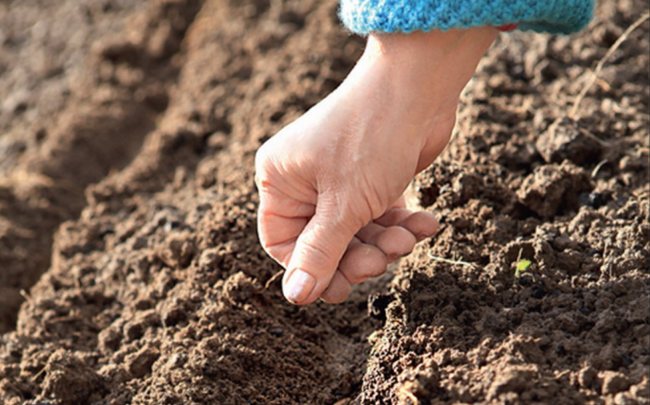

Sowing crops each summer resident carries out in his own way. Those who do not want to repot flowers once again, immediately sow seeds in a permanent place. Others build a temporary school for them and only then move them to the flower bed. In any case, you must first start preparing the land, and with the onset of suitable weather, sowing is already carried out.
In the event that the place for the flower garden has not yet been determined, you need to choose for sowing any free area located on a hill so that in the spring the seeds are not washed away by melt water. Beds for podzimnogo sowing should be high or fenced around the perimeter boards. If seeds of different plants are planted in the school, it is better to partition the site into zones, each of which must be marked with a plate with the name of the type and variety of flowers.
Advice! Plywood, slate, polycarbonate, curb tape can be used as dividers.
Land preparation


In September, while the ground is still warm and pliable, choose a warm, clear day to prepare the site for sowing. You need to dig up the soil, select all the roots of weeds from it. Simultaneously with the digging, a nutrient mixture is introduced. As fertilizers, 40 g of superphosphate and the same amount of potassium sulfate, as well as 20 g of ammonium nitrate are used for each square meter.
The components are mixed together and a little dry sand is added, and then this mixture is scattered over the surface of the soil. From organic fertilizers, humus and rotted manure can be added. Organic matter should not be fresh, otherwise the roots of plants will suffer, and flowering will be poor. After the soil has been prepared, the right-sized furrows are immediately made in it. Now it remains to wait for stable frosts and start sowing.
Sowing
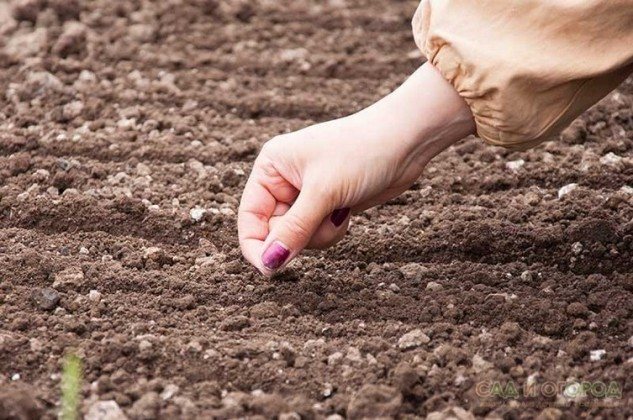

If sowing is planned to be done immediately on the flowerbed, you need to have a flowering calendar in front of your eyes in order to correctly compose the composition. Crops with different budding dates will provide the flower garden with a bright and fresh look over a long period of time. Also take into account the height of the plants so that they do not obstruct each other. In the center of the flower bed, taller varieties should be sown, and undersized flowers around the perimeter.
The grooves are densely sown with seeds, taking into account the fact that part of the seed material will die. Even if the crops sprout too often in the spring, it's okay. They can be thinned out at the stage of appearance of 2 true leaves. Do not embed them too deeply.In the spring, the soil that has caked up over the winter will cover the flower bed with a dense crust and it will be difficult for tender sprouts to break through it.
The finer the seeds, the closer they should be to the surface. If this rule is not followed, the seedlings will have to wait longer. Having sown seeds, they are sprinkled on top with a mixture of sand and humus or peat, compost. There is no need to water the plantings. In winter, plant embryos will hibernate. In the spring, for germination, they will have enough moisture formed during the melting of snow.
Autumn care, preparation for winter
Since the seeds after sowing will be in suspended animation until spring, they do not need any special care. After you have sprinkled the grooves with the seed material with a layer of soil, sketch the fallen leaves on top, and so that they are not blown up by the wind, cover the flower bed on top with spruce branches. By the way, thorny spruce paws keep snow on themselves perfectly. Crops will not need a denser shelter for the winter. On the contrary, they must undergo natural stratification.
On a note! In the spring, after the snow melts, it is recommended to cover the flower bed with a film to retain moisture so that the seeds do not dry out. As soon as shoots appear, the shelter is removed.
Preparing for landing
Seed selection


The most popular are the following types of marigolds: erect (tall), rejected (undersized), thin-leaved. In shape, the flowers of these species are large, small, double, densely double. Shades of flowers smoothly pass from yellow to brown. The choice of planting material comes down to the choice of the desired variety, to the determination of its quality. Seeds not older than 2 years have good germination. For planting in the fall, in addition to tagetes, other annuals are also suitable: cornflower, aster, cosmeya, nasturtium, amaranth, mattiola, poppy, calendula. The following flowers can be sown from perennials: Gaillardia, bells, carnations, chamomile, obrietta, aquilegia, delphinium, primrose.
Seat selection
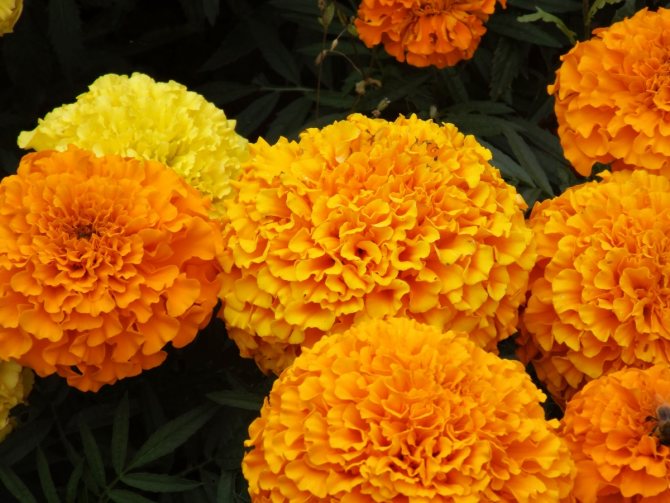

Marigolds can be planted in any soil. Flowers tolerate shade and partial shade well, but bloom more abundantly in sunny areas.
When is the best time to plant
The planting time of Tagetes depends on the chosen method: The healthiest and most viable seedlings grow when planted in a greenhouse film. But if you want to see flowering bushes as soon as possible, then planting should be carried out in early spring on the windowsill. Plants obtained from seedlings are more developed, bloom more abundantly and last longer. In March, erect marigolds are sown, from early to mid-April - small-leaved and rejected marigolds. The buds will appear together in early to mid June. Planting marigolds with seeds or transplanting seedlings into open ground in spring is carried out after the temperature stops dropping below + 5ºC at night. Warm sowing regions can begin from mid-April, and it is better to postpone sowing in the middle lane until mid-May.


If in the spring there is no time to deal with seedlings, then you can sow the seeds in the fall, and next spring, with the onset of heat, cover the sowing site with non-woven material so that frosts do not destroy the seedlings. When choosing a growing method, it is necessary to take into account the following factors: the climate of a particular area, night temperature, the likelihood of spring frosts, the expected flowering time of the bushes.
Useful tips for flower growers


Winter sowing allows you to identify the quality of the seed. If seedlings are too rare in winter, you can always buy seeds and grow additional plants from them using spring sowing. Here's what else you can do to ensure that the winter sowing of annual and perennial crops is fully justified:
- It is better to sow most annuals in a flowerbed immediately, removing excess seedlings in spring, since they are sensitive to transplanting, and it can delay their flowering.
- It is better to grow asters on a school, covering them with a film in the spring, and then transplant them to a permanent place.
- If, immediately after the snow melts, you install metal arcs above the flower bed and cover them with a film, flowering can be obtained even earlier by 1-2 weeks.
- During spring diving, it is necessary to observe the distance between shoots recommended for this crop. If the planting is too thick, the plants can hurt and bloom worse.
- When planting perennial asters on a flower bed, please note that tulips, gladioli and carnations are not recommended as predecessors for these flowers. But they can be safely planted after tagetis and calendula.
- When choosing a composition, take into account the moisture needs of the plant. Flowers that require abundant watering and those that prefer drought should not grow nearby. Plants in a flower garden should also match in color.
- You can make podzimny sowing flowers in separate containers, which are then dripped into the soil. This method replaces the use of a school and prevents the seeds from being washed out by melt water. You can later transplant these plants wherever you want. Pot holes should also be prepared in advance, they should be of the appropriate size.
Autumn planting of bulbous perennials and annuals
Planting bulbs is carried out 2 months earlier than planting seeds before winter. The general rules for planting bulbous flowers are as follows:
- Holes or pits are dug to a depth equal to three diameters of the planting material.
- The distance between plants in a row is 15-20 cm. An exception is tulips, which are planted no further than 10 cm from each other.
- Bulbs quickly rot from an excess of water, so perennials and annuals of this species grow well only on light soils with good drainage.
- Before planting, the bulbs are kept in a solution of potassium permanganate. The damaged areas are treated with brilliant greens.
- After planting, the ground is mulched, and if plants, for example hyacinths, are sensitive to temperature changes, they are previously covered with polyethylene.
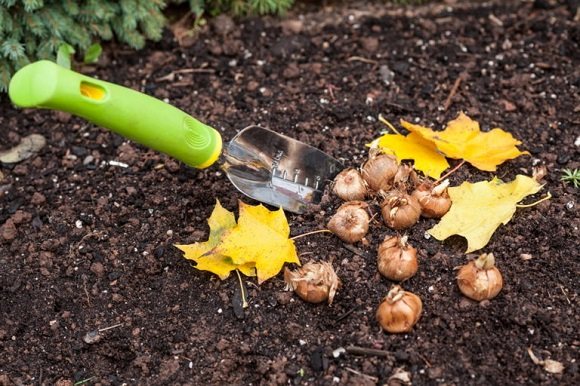

In order for the plants to take root, it is important to strictly observe the planting dates. So, rudbeckia, solidago, astilde, crocuses, scillas are placed in the ground in the first half of September. From the second decade - daffodils and hyacinths. Unpretentious tulips are planted from the third week of September to mid-October.
If the bulbs were not planted in the ground before the onset of the first cold weather, they can be planted at home in boxes or pots for subsequent distillation.


